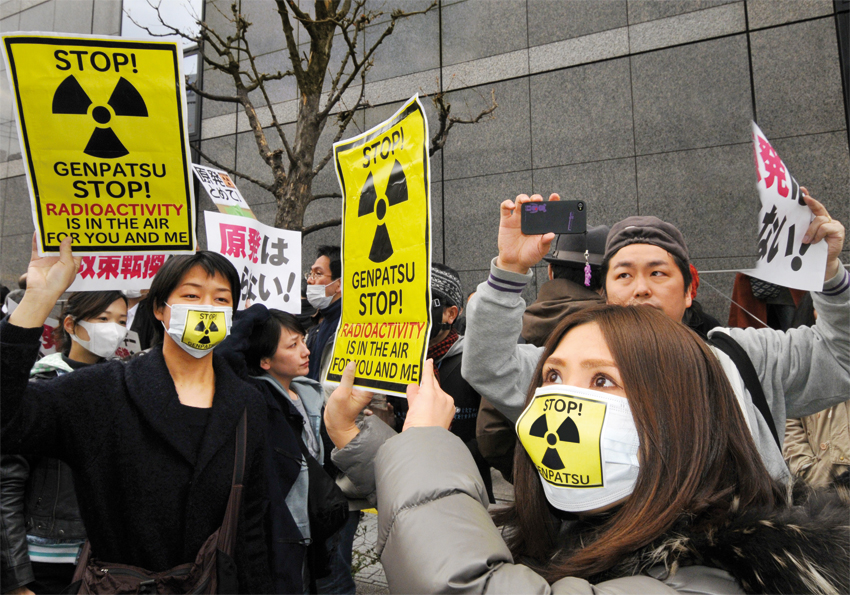"At the Playground with Radiation Detectors"

Makiko Hayashi-Witolla is a native Japanese living in Luxembourg. She learns firsthand about the effects that the March 2011 tsunami and disaster in Fukushima are having on her homeland, even one year later. Her family and friends who live in Nagoya (about 400 kilometers from Fukushima) have to cope with a completely new daily life. I had the opportunity to speak with Makiko Hayashi-Witolla.
Ms. Hayashi-Witolla, the events of March 11, 2011 shocked not only Japan, but the entire world as well. It has now been one year since the disaster struck. It almost appears as if the world has once again returned to “normality”. How do things look in Japan?
Nothing is as it was before. The people have become insecure. Children can no longer simply play in puddles or sandboxes and they walk around at the playground with radiation detectors. Even the little ones know that they have to go home because the radiation has reached a certain level, or when it rains. And people are also insecure when it comes to daily things like shopping. Many people ask themselves what they can still buy or eat without having to worry. Naturally, some people try to prove with certificates that many foods can be bought without a second thought. But there is still a lot of fear that foods from the area of East Japan could be contaminated with radiation. On the other hand, there are many Japanese who show solidarity with the region and intentionally buy such products. The many reports by foreign media also contribute to the insecurity. There you could almost think that Japan has been somehow written off, and that in any case, the people are contaminated. This even further adds to the fear. You could say that the tsunami and the Great Japan Earthquake were the first disaster, and the insecurity that my family and friends have to live with now is the second one.
Does this insecurity have an effect on the issue of energy supply? How has the thinking changed here?
Well, to be honest neither my family nor I thought too deeply about energy before the disaster. It was simply there. Naturally, everyone in Japan knows that coal and oil are limited raw materials. But one gets the feeling that the Japanese have only now begun to consciously think about energy. And also about what energies we use, because the fear of nuclear power has indeed grown. We know that there’s actually no alternative to renewable energy. Before the Great East Japan Earthquake, renewable energies were considered merely as supplemental sources of power. Today, many people in Japan believe that they could actually become our main sources of energy. We will contemplate wind, solar and hydroelectric power more intensively – as Germany has been doing for years. I hope that we take inspiration from Germany when it comes to renewable energy production.
The conditions for renewable energies are also good in Japan when you consider the solar irradiation levels or the conditions for wind energy. But how should we imagine this today: What specifically is being done with respect to the energy supply?
It’s not yet the case that windmills are being installed all over the countryside or that PV plants are being installed on the roof of every home. Not yet. But other measures are being taken instead. There are appeals everywhere to consume and use energy more efficiently, to avoid creating waste and to become more aware of how we treat resources. Store owners switch off the lighted signs on exterior facades, for example, and also save electricity within the stores. However, the subject of energy efficiency is nothing new for us. Japanese technology, such as DVD players, TVs, refrigerators and washing machines as well as cars and large machines are considered especially energy efficient. We began the first energy efficiency programs back at the end of the 1990s in order to use modern technology to reduce power consumption. Actually, there is something happening in Japan, even in small steps. Despite all of the insecurity, I now feel hopeful – simply because there is finally the awareness that we have to change our energy supply. We know that our energy must be safe and usable for us, but above all, it must not ever harm us again.
Ms. Hayashi-Witolla, thank you very much for taking the time out for this interview.


We must learn from this story and start moving towards safer renewable energy sources.